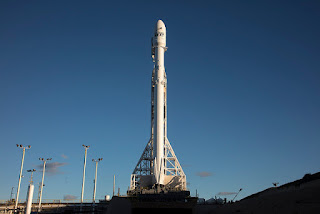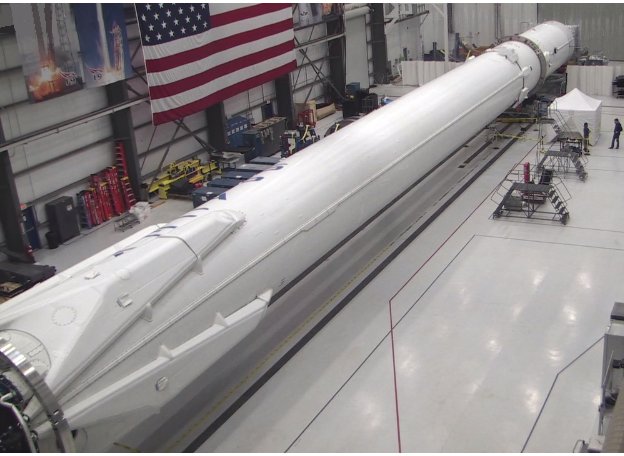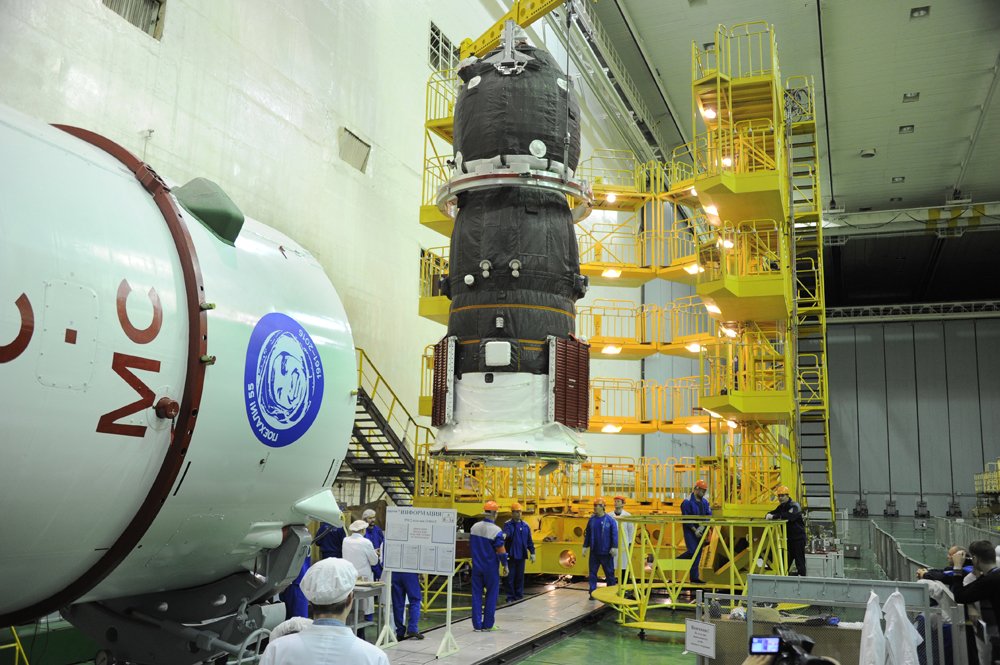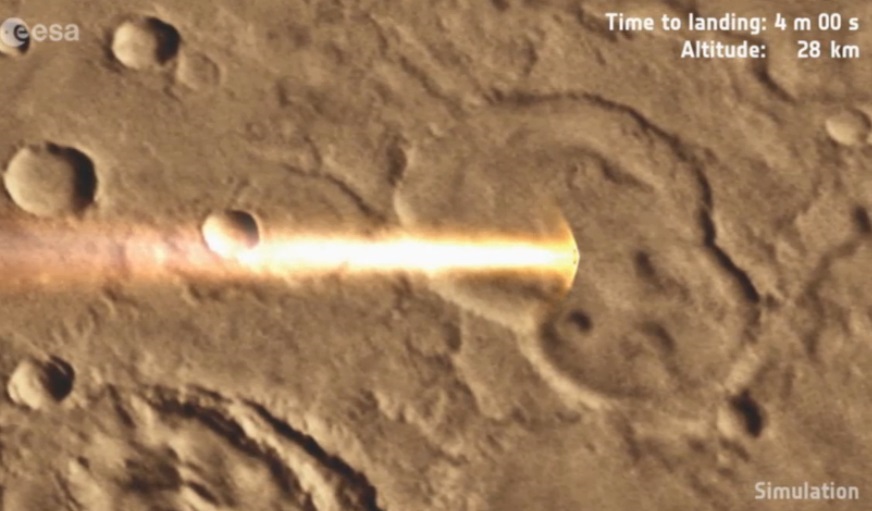| Atlas V NROL-36 standing on Launch Pad at VAFB (Credit: United Launch Alliance) |
Wednesday, January 18, 2017
SBIRS GEO-3 satellite to launch aboard Atlas V rocket
Saturday, January 14, 2017
Successful launch of 10 Iridium satellites by SpaceX
SpaceX has successfully launched and deployed 10 Iridium satellites for communications. As well as successfully launching the Falcon 9 back to flight, they landed the first stage back on the droneship JRTI (Just Read The Instructions) for the first time from the West Coast. During the livestream after first stage separation, the video feed from the first stage continued all the way down to the landing on the droneship without losing connection for the first time. Becoming the first US Launch of the new year, SpaceX launches with a successful launch and return to flight.
Friday, January 13, 2017
SpaceX to launch 10 Iridium satellites
 |
| Falcon 9 vertical at VAFB, California Photo: SpaceX |
 |
| Official Iridium-1 patch Photo: SpaceX |
Tuesday, December 27, 2016
SpaceX beginning to launch in 2017
 |
| Falcon 9 rocket to launch IridiumNEXT satellites |
Wednesday, December 21, 2016
SpaceX remembering ORBCOMM-2
 1 year ago today, SpaceX returned to flight after the CRS-7 explosion from an overpressurization in the second stage. They launched ORBCOMM-2 and landing the first stage back to Cape Canaveral for the first time becoming the first rocket ever to return from space and land. From then they've proceeded to land on their droneship several times and another time on land with CRS-9. May their return to flight with EchoStar 23 NET January 8th, 2017 be as successful as the last. Best of luck to SpaceX for their upcoming Return To Flight.
1 year ago today, SpaceX returned to flight after the CRS-7 explosion from an overpressurization in the second stage. They launched ORBCOMM-2 and landing the first stage back to Cape Canaveral for the first time becoming the first rocket ever to return from space and land. From then they've proceeded to land on their droneship several times and another time on land with CRS-9. May their return to flight with EchoStar 23 NET January 8th, 2017 be as successful as the last. Best of luck to SpaceX for their upcoming Return To Flight.
Sunday, December 18, 2016
ULA ends the year with EchoStar XIX
United Launch Alliance (ULA) ended the year of US launches by powering the EchoStar XIX (19) satellite into a Geostationary transfer orbit to bring high-speed internet to Americans. The Atlas V launched at 2:13 pm EST carrying the 15,000-pound satellite off the pad. The new satellite is now the world's highest capacity broadband satellite that will connect high-speed internet to Rural parts of America.
Thursday, December 8, 2016
Delta IV boosts WGS-8 into orbit
On top of a Delta IV rocket, the $426 Million WGS-8 satellite was
launched into a geostationary orbit 22,300 miles above the Earth. The Delta IV blasted off the pad last night (Dec. 7th) at 6:53pm EST after igniting its main hydrogen-fueled engine and four strap-on solid rocket boosters. The spacecraft is called the Wideband Global SATCOM satellite 8, or WGS-8, which is a more advanced version of its predecessors with the first Wideband Digital Channelizer that doubles its capacity. WGS-8 can process data at 11 gigabytes per second with its advanced channeler compared to 6 gigabytes per second on the previous versions. With the solar arrays deployed, measured from tip-to-tip, the satellite has a larger wingspan than a Boeing 737, but smaller than a 747.
launched into a geostationary orbit 22,300 miles above the Earth. The Delta IV blasted off the pad last night (Dec. 7th) at 6:53pm EST after igniting its main hydrogen-fueled engine and four strap-on solid rocket boosters. The spacecraft is called the Wideband Global SATCOM satellite 8, or WGS-8, which is a more advanced version of its predecessors with the first Wideband Digital Channelizer that doubles its capacity. WGS-8 can process data at 11 gigabytes per second with its advanced channeler compared to 6 gigabytes per second on the previous versions. With the solar arrays deployed, measured from tip-to-tip, the satellite has a larger wingspan than a Boeing 737, but smaller than a 747.
Thursday, December 1, 2016
Russian Progress spacecraft lost after 3rd stage anomaly
 A Progress vehicle on a Soyuz-U rocket launched today to go and dock with the Space Station on Dec. 3rd with supplies and food for the astronauts and stay docked for several months. However, due to an error that occurred during the burn of the vehicle's third stage that caused the Progress spacecraft to reenter back into the Earth's atmosphere in a remote and unpopulated area in the mountains in Southern Siberia. The Soyuz-U rocket launched with Progress MS-04 spacecraft at 9:51am EDT from the Baikonur Cosmodrome in Kazakhstan. All the events of the launch were going nominally and once the Spacecraft was in Space there was confusion whether the solar arrays and the navigation antennae have deployed or not. The supplies on Progress weren't too important and the crew members on the ISS will be okay without it. European Space Agency astronaut Thomas Pesquet tweeted, "Spaceflight is hard, sorry to hear the news @roscosmos. We are fine up here and will function fine until the next supply spacecraft arrives".
A Progress vehicle on a Soyuz-U rocket launched today to go and dock with the Space Station on Dec. 3rd with supplies and food for the astronauts and stay docked for several months. However, due to an error that occurred during the burn of the vehicle's third stage that caused the Progress spacecraft to reenter back into the Earth's atmosphere in a remote and unpopulated area in the mountains in Southern Siberia. The Soyuz-U rocket launched with Progress MS-04 spacecraft at 9:51am EDT from the Baikonur Cosmodrome in Kazakhstan. All the events of the launch were going nominally and once the Spacecraft was in Space there was confusion whether the solar arrays and the navigation antennae have deployed or not. The supplies on Progress weren't too important and the crew members on the ISS will be okay without it. European Space Agency astronaut Thomas Pesquet tweeted, "Spaceflight is hard, sorry to hear the news @roscosmos. We are fine up here and will function fine until the next supply spacecraft arrives".
SpaceX return to flight date set
 SpaceX's Falcon 9 rocket is set to launch again on December 16th at 12:36PM PST from Vandenberg Air Force Base, California. The Falcon 9 will launch 10 Iridium satellites into Low Earth Orbit. It isn't confirmed whether they will attempt a 1st stage landing on the droneship, but looking at previous launches it is likely. This will be the first launch of the Falcon 9 since the anomaly on September 1st when it exploded on the pad shortly before a static fire test of the engines.
SpaceX's Falcon 9 rocket is set to launch again on December 16th at 12:36PM PST from Vandenberg Air Force Base, California. The Falcon 9 will launch 10 Iridium satellites into Low Earth Orbit. It isn't confirmed whether they will attempt a 1st stage landing on the droneship, but looking at previous launches it is likely. This will be the first launch of the Falcon 9 since the anomaly on September 1st when it exploded on the pad shortly before a static fire test of the engines.Sunday, November 27, 2016
Bad altitude reading leaves ESA with a destroyed lander on Mars
 |
Tuesday, October 18, 2016
Cygnus launches toward the International Space Station
Orbital ATK's Antares rocket carrying Cygnus launched from
Wallops Island, Virginia en route to resupply the International Space Station. Antares carried Cygnus off the pad at 7:46pm EDT igniting its new engines for the first time since the failure back in 2014. Cygnus was separated from the Castor 30XL solid fuel second stage at approximately 7:55pm EDT, 9 minutes after liftoff. Both of the spacecraft's solar arrays were successfully deployed around 9:28PM EDT and is now awaiting to approach the International Space Station. Cygnus has to wait for the new arrival of the 3 new crew members arriving at the station Friday in a Soyuz spacecraft. The station crew members will capture Cygnus and is expected to dock Sunday, around 7:05am EDT.
 |
| Credit: NASA/Bill Ingalls |
Subscribe to:
Posts (Atom)
New droneship under construction for SpaceX rocket recovery
"Of Course I Still Love You" positioned in the Atlantic Photo // SpaceX To this date, SpaceX currently has 2 droneships to lan...

-
Photo from the Kennedy Space Center Facebook page Tonight at 7:05pm EDT, NASA's OSIRIS-REx spacecraft will launch from Cape Canavera...
-
Falcon 9 Horizontal at SLC-40 - Credit: Craig Vander Galien // SpaceNews SpaceX was planning the liftoff of the Falcon 9 with Dragon to ...





